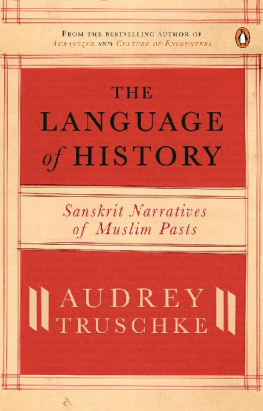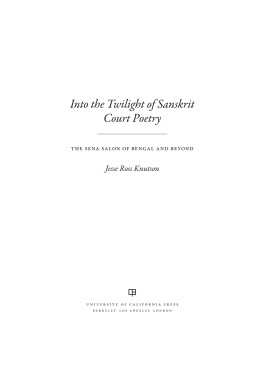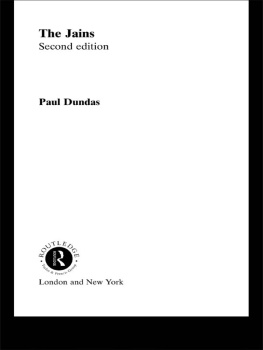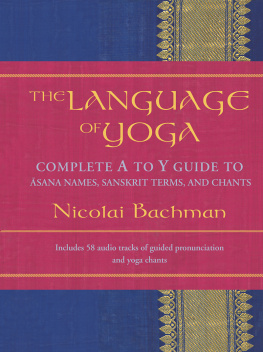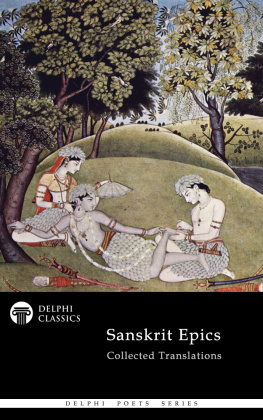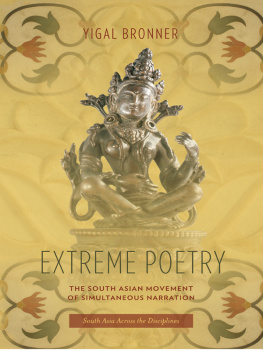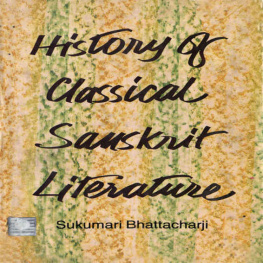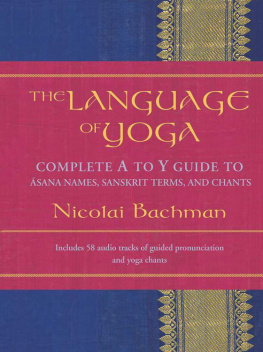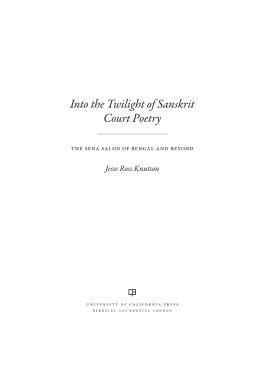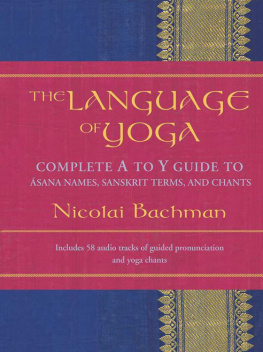CONTENTS
Luminos is the Open Access monograph publishing program from UC Press. Luminos provides a framework for preserving and reinvigorating monograph publishing for the future and increases the reach and visibility of important scholarly work. Titles published in the UC Press Luminos model are published with the same high standards for selection, peer review, production, and marketing as those in our traditional program. www.luminosoa.org
Language of the Snakes
SOUTH ASIA ACROSS THE DISCIPLINES
Edited by Muzaffar Alam, Robert Goldman, and Gauri Viswanathan
Dipesh Chakrabarty, Sheldon Pollock, and Sanjay Subrahmanyam, Founding Editors
Funded by a grant from the Andrew W. Mellon Foundation and jointly published by the University of California Press, the University of Chicago Press, and Columbia University Press
For a list of books in the series, see .
Language of the Snakes
Prakrit, Sanskrit, and the Language Order of Premodern India

Andrew Ollett

UNIVERSITY OF CALIFORNIA PRESS
University of California Press, one of the most distinguished university presses in the United States, enriches lives around the world by advancing scholarship in the humanities, social sciences, and natural sciences. Its activities are supported by the UC Press Foundation and by philanthropic contributions from individuals and institutions. For more information, visit www.ucpress.edu .
University of California Press
Oakland, California
2017 by Andrew Ollett
Suggested citation: Ollett, Andrew. Language of the Snakes: Prakrit, sanskrit, and the Language Order of Premodern India . Oakland: University of California Press, 2017. doi: https://doi.org/10.1525/luminos.37
This work is licensed under a Creative Commons CC BY-NC-ND license. To view a copy of the license, visit http://creativecommons.org/licenses .
Library of Congress Cataloging-in-Publication Data
Names: Ollett, Andrew, 1986- author.
Title: Language of the snakes : Prakrit, Sanskrit, and the language order of premodern India / Andrew Ollett.
Description: Oakland, California : University of California Press, [2017] | Includes bibliographical references and index. |
Identifiers: LCCN 2017018705 (print) | LCCN 2017019745 (ebook) | ISBN 9780520968813 (ebook) | ISBN 9780520296220 (pbk. : alk. paper)
Subjects: LCSH: Prakrit literature History and criticism. | Prakrit languages. | Sanskrit literature History and criticism. | La nguage and culture India.
Classification: LCC PK4994 (ebook) | LCC PK4994 .O45 2017 (print) | DDC 891/.3-dc23
LC record available at https://lccn.loc.gov/2017018705
26 25 24 23 22 21 20 19 18 17
10 9 8 7 6 5 4 3 2 1
|
CONTENTS
LIST OF ILLUSTRATIONS
LIST OF TABLES
ACKNOWLEDGMENTS
Im thankful to a great number of people at Columbia University, Harvard University, and the University of California Press for support, comments and suggestions. These include participants in the MESAAS post-MPhil seminar (Nasser Abdurrahman, Omar Farahat, Yitzhak Lewis, Wendell Marsh, Timothy Mitchell, Casey Primel, Kenan Tekin, Sahar Ullah), the INCITE program at Columbia (coordinated by Bill McAllister), in whose basement office the majority of this book was written, the South Asia Graduate Student Forum (Fran Pritchett, Jay Ramesh, Joel Bordeaux, and Joel Lee), and my colleagues at the Society of Fellows (Alexander Bevilacqua, Stephanie Dick, Alisha Holland, Abhishek Kaicker, Ya-Wen Lei, and Adam Mestyan). My research would not have been possible without the support of the staff at MESAAS and GSAS at Columbia, including Jessica Rechtschaffer, Michael Fishman, Irys Schenker, Sandra Peters, and Kerry Gluckmann. I also thank the staff at Harvards Society of Fellows: Yesim Erdmann, Kelly Katz, Diana Morse, and Ana Novak. Bill Nelson produced the map in . I thank Whitney Cox, Owen Cornwall, Irene SanPietro, Dalpat Rajpurohit, David Shulman, and Anand Venkatkrishnan for feedback at various points over the life of this project. Yigal Bronner, Allison Busch, Jack Hawley, and Sudipta Kaviraj were generous with comments and suggestions when this book was a dissertation. The late Barney Bate introduced me to much of the literature that is cited in these pages. Sheldon Pollock provided constant support and guidance; it was he who encouraged me to begin this project in the first place. The Lalbhai Dalpatbhai Institute of Indology, the Bhandarkar Oriental Research Institute, the Asiatic Society in Kolkata, and the NepaleseGerman Manuscript Cataloguing Project all provided important manuscript materials.
1

Prakrit in the Language Order of India
What historical a priori provided the starting-point from which it was possible to define the great checkerboard of distinct identities established against the confused, undefined, faceless, and, as it were, indifferent background of differences?
MICHEL FOUCAULT, THE ORDER OF THINGS
It should be understood that the people of India have a number of languages, Mrz Khn observes in his Gift from India in 1676, but those in which books and poetical works may be composedsuch as would be agreeable to those who possess a refined disposition and straight understandingare of three kinds.
With these words, addressed to the son of the Mughal emperor Aurangzeb, Mrz Khn articulated the age-old schema of the bh traya, the three languages. This was one of the most enduring ways of representing language in India. Of course, then as now, India was one of the most linguistically diverse places on earth. But the sense that Mrz Khn assigns to the schema of three languages is that these three alone answer to the purposes of textuality, and especially the higher purposes of textuality to which he alludes. But lets now turn to his description of Prakrit:
Second, Par kirt. This language is mostly employed in the praise of kings, ministers, and chiefs, and belongs to the world, that is to say, the world that is below the ground; they call it P t l-b n , and also N g-b n , that is, the language of the lowest of the low, and of reptiles of mean origin, who live underground. This language is a mixture of Sahskirt, mentioned above, and Bh kh , to be mentioned next.
On originally reading this passage, I had two reactions. The first was that of my inner historian, who recognized that Mrz Khns description was remote from what I knew about Prakritand, more important, what was known about Prakrit even in Mrz Khns time. Nobody ever represented it as a language of the snakes, except, as I later found out, a handful of other authors from the seventeenth and eighteenth centuries. Given that this linguistic tradition began, as Ill argue here, around the first century, Prakrit was only known as the language of the snakes at the tail end of its long history. Hence I wondered what Mrz Khns sources might have been. But my second reaction was to the description itself. Mrz Khn begins in a register of descriptive ethnography (the people of India have a number of languages) and then transports us to a snake-infested subterranean realm. Prakrit, he tells us without a hint of contradiction, is the language of the lowest of the low and yet used to praise the highest of the high. At this point, the question of Mrz Khns sources gave way to another question: what would it mean for Prakrit to be the language of the snakes anyway? It is obviously not a language in the sense of the Linguistic Survey of India: we cant send a field linguist into the underworld and have him ask the resident serpents how they say a couple dozen words. Is Mrz Khn simply reporting folk beliefs or myths? Does this mean that we have left the surface of the earth for good, and retreated into a fantastic realm of imaginary language? Or can weshould wetry to recover some shards of historical truth from Mrz Khns account?


